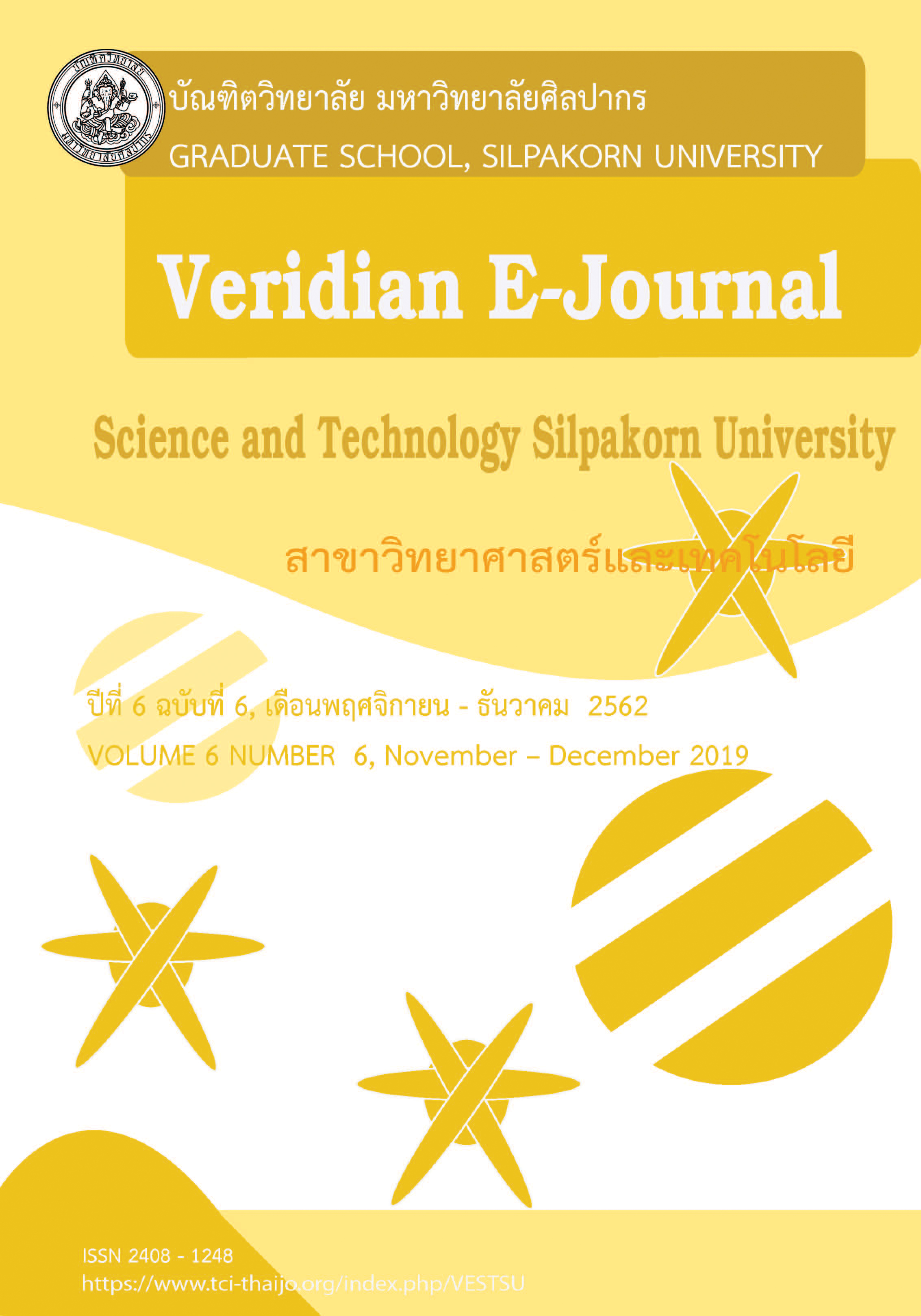Effect of Season on Water Quality of Extensive and Intensive Seabass Culture Ponds and Associated Canals
Main Article Content
Abstract
Human activities in the upstream areas of Bangkok could affect water quality in the coastal areas where seabass was cultured. Most farmers use water from associates canals without treatment, thus it may be polluted with organic and toxic chemicals. This research aims to study the seasonal effect on water quality of seabass culture ponds and associated canals by monitoring the water quality during culture period. Extensive farm in Bang Khun Thian district, Bangkok and intensive farm in Phra Samut Chedi district, Samut Prakarn were used as the study sites. Water samples were grabbed in ponds and associated canals during wet season (June 2017 – September 2017) and dry season (December 2017 – March 2018). Then, they were analyzed for temperature, Dissolved Oxygen (DO), pH, Biochemical Oxygen demand (BOD), Chemical Oxygen demand (COD), Nitrate (NO3-), Total Phosphorus (TP), Total Coliform Bacteria (TCB) and Fecal Coliform Bacteria (FCB). Results showed that TCB and FCB in wet season were higher than dry season for both canals and culture ponds because of water runoff from the land into the surface water. This also affects TCB and FCB in ponds. TCB of intensive and extensive ponds in wet season were 7.80 and 1.73 times of intensive and extensive pond in dry season, respectively. FCB of intensive and extensive pond in wet season were 8.11 and 5.20 times of intensive and extensive pond in dry season, respectively. There was a significant difference between season only in extensive pond (p < 0.05). In dry season, associated canals had low DO and high COD. In addition, the seawater level rise affected water quality of ponds because canal water was higher than embankment then water from canals spilled into the ponds. This affected the water quality in culture ponds. Thus, farmers should treat canal water or clarifier before importing to culture ponds. The annual seabass production of extensive pond and intensive pond were 0.33 and 20.45 tonnes/ha-crop, respectively and the yield of 74.13% and 77.50%, respectively.

